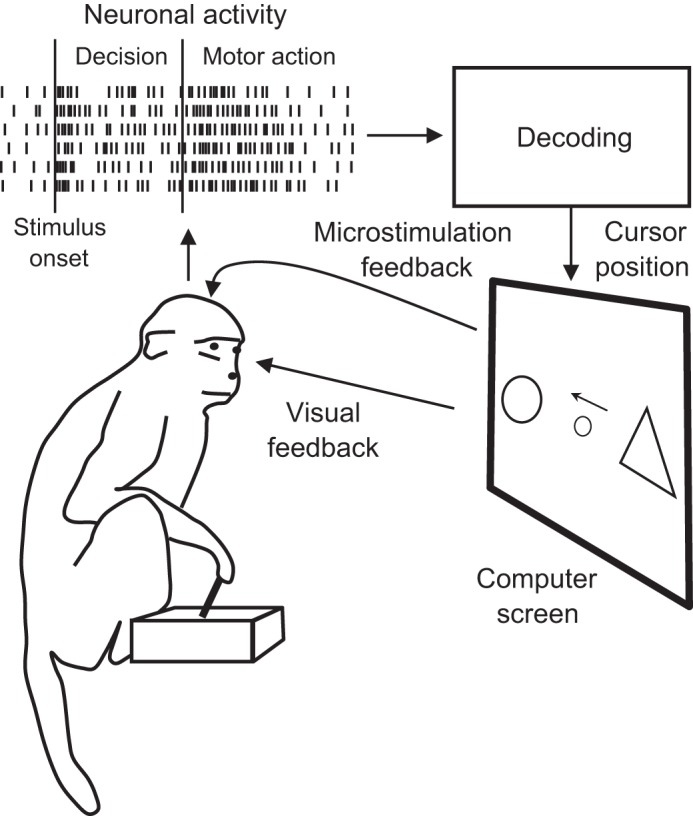Fig. 1.

Schematics of a hypothetical decision-making BMI. A monkey is seated in front of a computer screen that displays a cursor and 2 targets. The monkey uses a rule (for example, “prefer circles to triangles”) to select the target and then places the cursor over the target to receive a reward. Initially, the monkey performs the task manually, using a handheld joystick to move the cursor. At the same time, neuronal ensemble activity is recorded in the monkey’s brain with the use of chronically implanted microelectrode arrays, and a decoding algorithm is trained to extract various components of the decision-making process from the neuronal activity. Depending on the brain areas implanted, the decoder could extract representation of the selected object, prepared movement direction, executed movement direction, and the decision to inhibit movement initiation. It is suggested that decoding these signals before movement onset can improve BMI accuracy and versatility.
